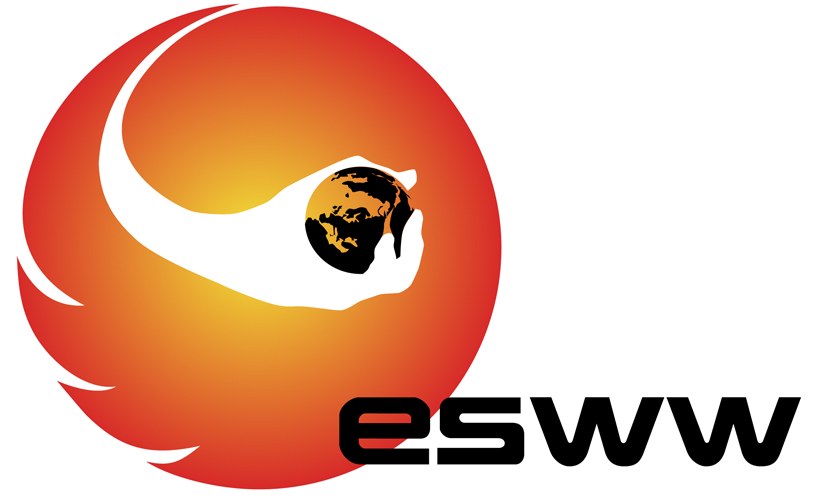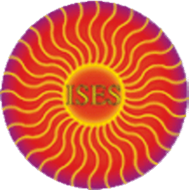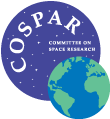
16-20 November, 2009 - Brugge, Belgium
| Session: | Session 4 Space Weather and Health Issues (04) |
| Type: | Oral session |
| Date: | 19 November 2009 |
| Time: | 09:00 - 12:30 |
| Chair: | N Crosby, G Reitz |
| Co-chair: | |
| Remarks: | Coffee break at 10:30 |
| Seq | Time | Title | Abs No | ||||
| 1 | 09:00 |
Operational Radiation Protection for ESA Astronauts
Straube , Ulrich H. European Space Agency, GERMANY Abstract. Besides the influence of microgravity on the human body, radiation is recognized as a main health concern to the astro- and cosmonauts. The radiation environment that the crew experiences during a space flight differs significantly to that found on earth due to particles of greater potential for biological damage. The exposure that the crew receives during a space flight significantly exceeds exposures routinely received by terrestrial radiation workers. The European Space Agency?s (ESA) Astronaut Center (EAC) in Cologne, Germany, is home of the European Astronaut Corps. Part of the EAC is the Crew Medical Support Office (HSF-AM) responsible for ensuring the health and well being of the European Astronauts. A sequence of activities is conducted to protect astro- and cosmonauts health, including those targeting to mitigate adverse effects of space radiation. Health related activities are part of a multinational Medical Operations (MedOps) concept, which is executed by the different Space Agencies participating in the human spaceflight program to the International Space Station (ISS). This presentation will give an introduction of the current measures for radiation monitoring and protection of ESA astronauts. |
|||||
| 2 | 09:30 |
Investigations into Biological Effects of Radiation (IBER)
Reitz, Guenther German Aerospace Center, GERMANY Space radiation presents major challenges to astronauts on the International Space Station and for future missions to the Earths moon or Mars. In an effort to gain more information on space radiation risk and to develop countermeasures, NASA started several years ago a Space Radiation Health Program, which is currently supporting biological experiments performed at the Brookhaven National Laboratory (Upton, NY). Accelerator-based radiobiology research in the field of space radiation research is also under way in Russia and Japan. Space radiation research in Europe has so far been mostly driven by flight experiments, and remarkable results were gathered in the field of space radiation dosimetry in low-Earth orbit. To support research in this field in Europe, ESA issued in 2005 a call for tender for a preliminary study of investigations on biological effects of space radiation (IBER). The IBER study group has recommended ESA to support a research program on biological effects of heavy ions using GSI in Darmstadt (Germany) as main facility. New biology research topics identified as possible targets for large integrated projects were noncancer later effects, acute effects by large solar particle events, and interaction of space radiation with other space environment stressors. After an announcement of opportunity which was issued by ESA in March 2008, several experiments were selected. The first experiment campaign was started in August this year. This represents the first step toward a European Space Radiation Health Program. |
|||||
| 3 | 10:00 |
Space Weather Issues in Space Tourism
Apel, Uwe Hochschule Bremen, GERMANY The future development of space tourism depends not only on the number of people who are willing to travel to space and who have also the financial resources to do so, but also on their physical and mental abilities. Thus, human health issues with respect to space tourism and in particular these, which are caused by space weather issues will be addressed. Starting with the principle health requirements for space tourists in terms of fitness and age, the potential health risks will be described and evaluated. The effects of key space weather phenomena, which must be taken into account will be desribed in quality and quantity. Furthermore, also possible countermeasures to reduce the associated risks for space travellers will be addressed. The analysis and discussion shows that the majority of the people who are interested in space travel will be able to enjoy their trip providing that the whole space tourism infrastructure (transportation system and space hotels) is designed properly with respect to spac weather phenomena. Potential health risks for space tourists coming from space weather phenomena are not more severe as for comparable tourist activities on Earth. |
|||||
| 4 | 11:00 |
Analysis of the GCR Dose Rate Increase Onboard Spacecraft and Aircraft in the Declining Phase of the 23rd Solar Cycle
Dachev, Tsvetan1; Ploc, Ondrej2; Spurny, Frantisek2; De Angelis, Giovanni3 1Solar-Terrestrial Influences Institute, Bulgarian Academy of sc, BULGARIA; 2Nuclear Physics Institute at Czech Academy of Sciences, CZECH REPUBLIC; 3DLR, Institute of Aerospace Medicine, GERMANY The absorbed dose rates from Galactic Cosmic Rays (GCR) and their secondary were continuously measured at aircraft altitudes with Liulin type spectrometer since 2001. These measurements were performed in cooperation with Czech Airlines (CSA). The data cover the declining phase of the 23rd solar cycle and show increase from about 1.6 to 2.3 µGyh-1. The dose rates from GCR were also independently measured with analogical instruments onboard following spacecraft: International Space Station in 2001 and 2008-2009; Foton-M2/M3 satellites in June 2005 and September 2007 respectively and on Indian Chandrayaan-1 satellite in 2008-2009. These dose rates increase from about 6.1 to 13-14 µGyh-1. Obtained experimental data are compared with computational models and the health issues are discussed. |
|||||
| 5 | 11:20 |
Impacts of Ground Level Enhancements on the Radiation Exposure in Aviation
Matthiä, Daniel1; Heber, Bernd2; Sihver, Lembit3; Meier, Matthias M.1; Berger, Thomas1; Reitz, Günther1 1German Aerospace Center (DLR), GERMANY; 2Christian-Albrechts Universität, Kiel, GERMANY; 3Chalmers University of Technology, Göteburg, SWEDEN
The radiation environment in the atmosphere can be significantly affected by the influence of highly energetic particles produced in solar particle events related to solar flares and coronal mass ejections. During some events the impacts can be even measured on ground by Neutron Monitor stations. Only the largest solar particle events accelerate protons to energies of several hundreds of MeV and above which are necessary to cause such a Ground Level Enhancement. During these large events the radiation exposure in the lower atmosphere in general and especially at aviation altitudes may be significantly increased. |
|||||
| 6 | 12:00 |
Geomagnetic and Man-Made Magnetic Fields as a Potential Health Hazard
Ptitsyna, Natalia SPb IZMIRAN, RUSSIAN FEDERATION At present time there is a broad consensus in the international scientific community that exposure to low-frequency, low-intensity environmental electric and magnetic fields can produce biological effects, in spite of the fact that the energy involved is quite small. Correspondingly, there has also been increasing concern that these biological effects may result in health problems. In the last decades many investigations have been carried out on the possible health hazards of natural geomagnetic as well as man-made magnetic fields. In this report the present state of established knowledge of the matter is evaluated. Results on bioeffects of natural and man-made fields are considered not independently, but in mutual light. It is discussed physical interaction of magnetic field and humans. Special attention is paid to searching potentially hazardous features of space weather. Evidence is found that geomagnetic storms, which are followed by Forbush decreases in cosmic ray variations, could be harmful for human health. |
|||||
| 7 | 11:40 |
Time-Frequency Behaviour of Medical Diseases and Their Relation with Solar Activity
Díaz-Sandoval, Rosa; Erdelyi, Robert University of Sheffield, UNITED KINGDOM
Seasonal behaviour of many human diseases have been observed and reported in the literature for years. Although the Sun plays an essential role in the origin and evolution of life on Earth, it barely has been taken into account in biological processes for the development of a disease. Recently, an increasing number of studies claim to establish statistical correlations of solar activity proxies with cardiac, mental and immune system-related human diseases. It has been suggested that there could be a subtle resonant response, proven or not, of the human body to intrinsic periodicities in the Sun for susceptible organisms.
In our study, we analyze the behaviour of time series of cardiac and immune system-related diseases recorded in England and Wales from 1997 to 2005 in relation with solar activity proxies (sunspots, AA-index and Ap-index). Discrete wavelet transform method is used to obtain the time-frequency characteristics of all the series along the studied period. Moreover, cross wavelet and wavelet coherence methods are applied to pairs of heliogeophysical and medical data in order to analyze the level of coherence in their periodicities content.
Medical series show a prominent natural periodicity of one year in addition to intermittent spectral content of high frequencies that appear mostly in months when Earth is closest to the sun. There is also evidence for a periodicity of 1.4 to 1.6 years in cardiac diseases that has been previously reported in solar wind behaviour. Sunspots data mostly have high periodicity content while AA and Ap indices show a wider range of frequencies. Using cross wavelet and coherence methods, some of the series show a statistically relevant relationship at various frequencies, among them, one-year and half-year periodicities are very strong for most of the diseases. A more detailed analysis shows a variation of spectral content according to the relative position of Earth with respect to the Sun. |
|||||
 |
 |
 |
 |
 |
 |
 |